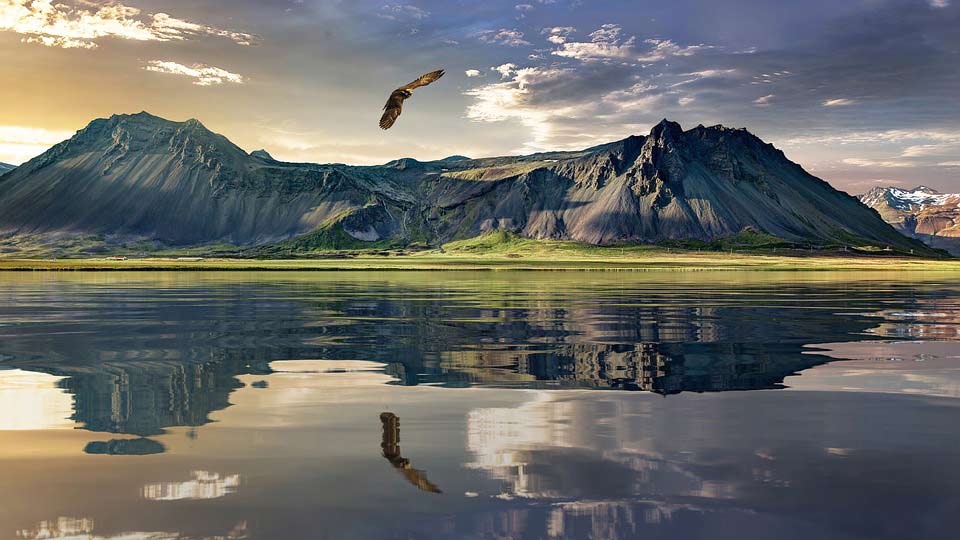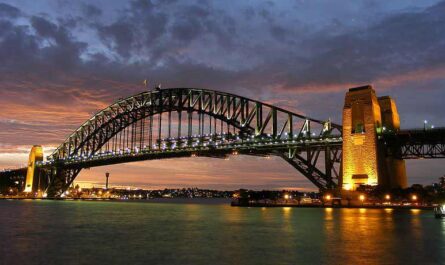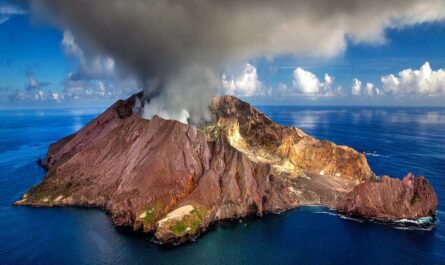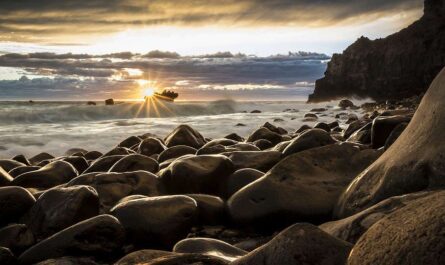Facts about New Zealand are full of surprises and fun. Nestled in the southwestern Pacific Ocean, New Zealand stands as a captivating gem renowned for its stunning landscapes, rich indigenous culture, and adventurous spirit. Comprising two main islands, aptly named the North Island and the South Island, as well as numerous smaller islands, this nation boasts diverse terrain ranging from pristine beaches to rugged mountains, verdant forests to rolling farmland. Its unique geographical isolation has fostered the evolution of a remarkable array of flora and fauna found nowhere else on Earth, making it a biodiversity hotspot of global significance.
Crazy, Interesting, Cool, Fun Facts about New Zealand
The indigenous Māori people, who arrived in New Zealand over a thousand years ago, infuse the country with a profound cultural heritage deeply rooted in their connection to the land, known as ‘Whenua’. Their language, customs, and traditions continue to enrich the nation’s identity, serving as a testament to resilience and endurance amidst centuries of change. Here are some interesting facts about New Zealand:
1. The Indigenous Roots: Early Settlement by Eastern Polynesians
The captivating history of New Zealand traces back to its earliest inhabitants, the Eastern Polynesians, who voyaged across the vast expanse of the Pacific Ocean to establish settlements on the islands between 1250 and 1300. These intrepid pioneers laid the foundation for a rich and diverse cultural heritage, which flourished into the distinctive Maori civilization. Over centuries, the Maori people forged a deep connection with the land, cultivating traditions, language, and customs that are intrinsic to their identity.
2. Encounter with European Explorers: Abel Tasman and James Cook
The dawn of European exploration ushered in a new chapter in New Zealand’s history, marked by encounters fraught with both curiosity and conflict. In 1642, Dutch explorer Abel Tasman made landfall on New Zealand’s shores, initiating a tense standoff with the indigenous Maori people. Nearly a century later, in 1769, British explorer James Cook embarked on a comprehensive survey of the coastline, marking the first official European presence in the region. These encounters paved the way for subsequent European exploration and colonization of New Zealand.
3. Colonization and Conflict: The Treaty of Waitangi and the New Zealand Wars
The signing of the Treaty of Waitangi in 1840 signaled a pivotal moment in New Zealand’s trajectory, formally establishing the islands as a British colony. While the treaty aimed to facilitate peaceful coexistence between Maori and European settlers, it ultimately sparked a series of conflicts known as the New Zealand Wars. From 1845 to 1872, tensions simmered as battles erupted over land ownership and sovereignty, pitting Maori tribes against British colonial forces. The aftermath of these conflicts reverberates through New Zealand’s history, shaping contemporary debates and legal disputes surrounding land rights and historical grievances. Today, efforts persist to reconcile the legacies of colonization through judicial proceedings and diplomatic negotiations, highlighting the ongoing quest for reconciliation and justice.
4. Contrasting Populations: North Island vs. South Island
While the North and South Islands of New Zealand share similar landmasses, they diverge significantly in terms of population distribution. Remarkably, despite their comparable size, the North Island harbors approximately two-thirds of the country’s total population, while the South Island accommodates the remaining populace. This demographic imbalance underscores the concentration of human settlement and economic activity in the North Island, shaping the socio-cultural landscape of the nation.
5. Ethnic Diversity and Urban Centers
New Zealand’s demographic mosaic reflects a tapestry of ethnicities and cultures, with European descent constituting the majority of the population. However, the urban hub of Auckland stands as a beacon of diversity, boasting a vibrant tapestry of cultures and ethnicities. Notably, Auckland claims the distinction of being the most ethnically diverse city in the country, hosting the world’s largest Polynesian population. This multicultural dynamism enriches the social fabric of Auckland, fostering a cosmopolitan ethos that celebrates inclusivity and cultural exchange.
6. Urban Population Centers
The urban landscape of New Zealand is characterized by a hierarchy of population centers, with Auckland reigning as the nation’s preeminent metropolis. Home to approximately 1.3 million inhabitants, Auckland commands a pivotal role as the economic, cultural, and commercial epicenter of the country. Following closely behind, Wellington, the capital city, and Christchurch, the largest city in the South Island, each harbor approximately 400,000 residents. Despite their divergent geographical locations, these urban centers play pivotal roles in shaping the national identity and socio-economic trajectory of New Zealand.
7. Unique Communities: Gisborne’s Distinctive Identity
Nestled amidst New Zealand’s urban tapestry lies the picturesque city of Gisborne, distinguished by its intimate community ambiance and serene coastal vistas. Despite its modest population of around 35,000 inhabitants, Gisborne claims a noteworthy position as the 15th largest city in the country. Renowned for its laid-back lifestyle and scenic beauty, Gisborne epitomizes the quintessential charm of provincial New Zealand, offering a tranquil retreat from the hustle and bustle of urban life.
8. Automobile Affection: New Zealand’s High Ownership Rate
New Zealanders have a profound fondness for automobiles, evident in their impressive ownership statistics. With a population of approximately 4 million people, the nation boasts a staggering fleet of 2.5 million automobiles, ranking among the highest ownership rates globally. This deep-seated affinity for vehicular transportation underscores the integral role that automobiles play in New Zealand’s lifestyle and economy, facilitating mobility and connectivity across its diverse landscapes.
9. Historic Accord: The Treaty of Waitangi
A pivotal moment in New Zealand’s history unfolded in 1840 with the signing of the Treaty of Waitangi, cementing the nation’s status as a colony of the British Empire. Crafted through negotiations between British representatives and Maori chiefs, the treaty delineated principles of governance, land ownership, and cooperation. Despite its significance as a founding document, the Treaty of Waitangi remains a source of contention and ongoing debate, as interpretations of its clauses continue to shape contemporary discussions on indigenous rights and sovereignty.
10. Trailblazing Progress: Women’s Suffrage
In a momentous leap forward for gender equality, New Zealand emerged as a trailblazer by granting women the right to vote in 1893, marking a historic milestone in the global struggle for women’s suffrage. This progressive legislation affirmed New Zealand’s commitment to democratic principles and egalitarian ideals, recognizing women as equal participants in the political process. The enfranchisement of women not only transformed the fabric of New Zealand society but also catalyzed social reform movements worldwide, inspiring future generations to champion the cause of gender equality and empowerment.
11. Rich Reptilian Diversity: New Zealand’s Native Species
New Zealand boasts a diverse array of native reptile species, comprising a total of 44 unique representatives. Among these remarkable creatures, the tuatara reigns supreme as the largest, reaching impressive lengths of up to 2 feet (60 cm). This enigmatic reptile holds a special distinction as the sole surviving species of a lineage of reptiles that faced extinction in other regions of the world a staggering 60 million years ago. The tuatara’s enduring presence serves as a testament to New Zealand’s status as a sanctuary for ancient and unique biodiversity, embodying the resilience of its natural heritage.
12. Indigenous Guardians: The Māori People
At the heart of New Zealand’s cultural tapestry lies the indigenous Māori people, who trace their ancestry to the Polynesian group. Revered as the original inhabitants of the land, the Māori possess a rich heritage steeped in tradition, spirituality, and kinship with the natural world. Their profound connection to the land is reflected in their language, which belongs to the Polynesian linguistic family, and their enduring cultural practices, which serve as a testament to their resilience and cultural vitality.
13. Cultural Mosaic: Māori Population in New Zealand
Despite their status as the indigenous people of New Zealand, Māori constitute a minority within the nation’s demographic landscape. Accounting for approximately 15% of the total population, Māori communities play a significant role in shaping the socio-cultural fabric of the country. Their contributions span diverse domains, including art, literature, music, and governance, enriching the national identity with their distinctive perspectives and values. As custodians of ancestral knowledge and guardians of cultural heritage, Māori communities continue to navigate the complexities of modernity while safeguarding their unique cultural legacy for future generations.
14. Unique Mammalian Residents: Bats in New Zealand
In the ecological tapestry of New Zealand, bats stand as the sole representatives of native land mammals. These nocturnal creatures, though often overlooked, play a vital role in the ecosystem as pollinators and insect controllers. Remarkably, all other land mammals found in New Zealand have been introduced by human intervention, underscoring the island nation’s unique evolutionary trajectory and the impact of human activity on its biodiversity.
15. Cinematic Backdrop: “The Lord of the Rings” Filming Locations
New Zealand’s breathtaking landscapes have served as the enchanting backdrop for one of cinema’s most epic sagas, “The Lord of the Rings.” Directed by Peter Jackson, the film trilogy mesmerized audiences worldwide with its stunning visuals and immersive storytelling. Fittingly, the majority of scenes in these cinematic masterpieces were filmed on location across the diverse terrain of New Zealand. From the misty mountains of the South Island to the verdant expanses of the North Island, the country’s natural splendor provided the perfect canvas for bringing J.R.R. Tolkien’s fantastical world to life on the silver screen.
16. Sacrifice and Remembrance: World War I Casualty Rate
The harrowing toll of World War I reverberated across the globe, leaving an indelible mark on the collective consciousness of nations. For New Zealand, the conflict exacted a staggering human cost, with a casualty rate of 58% among its servicemen. The profound loss of life, coupled with the enduring trauma of war, cast a somber shadow over the nation’s history, reshaping its social fabric and collective identity. Today, New Zealand honors the sacrifices of its fallen soldiers through acts of remembrance and commemoration, ensuring that their legacy of courage and valor remains etched in the annals of history for generations to come.
17. Progressive Legislation: Legalization of Same-Sex Marriage
In a historic milestone for LGBTQ+ rights, New Zealand made significant strides toward equality by legalizing same-sex marriage in 2013. This progressive legislation marked a pivotal moment in the nation’s journey toward inclusivity and social justice, affirming the rights and dignity of individuals regardless of sexual orientation or gender identity. By extending marriage equality to all citizens, New Zealand reaffirmed its commitment to fostering a society founded on principles of respect, diversity, and equal rights for all.
18. Gender Disparity in Prison Population
New Zealand’s prison demographics reflect a stark gender disparity, with the overwhelming majority of inmates being male. Statistics reveal that a staggering 94% of the country’s prisoner population comprises men, highlighting entrenched societal issues such as systemic inequality, poverty, and marginalized communities. Addressing the root causes of this gender imbalance in the criminal justice system demands a holistic approach that prioritizes rehabilitation, social support, and opportunities for reintegration into society.

19. Coastal Proximity: Geographic Character of New Zealand
The geographic layout of New Zealand’s islands shapes its distinctive identity and relationship with the surrounding oceanic expanse. Characterized by elongated landmasses rather than vast expanses, New Zealand’s geography ensures that no point within its borders is more than 128 kilometers (79 miles) away from the ocean. This proximity to the sea permeates every facet of life in New Zealand, influencing its climate, culture, economy, and recreation. From bustling coastal cities to secluded beachfront paradises, the ocean serves as both a physical boundary and a source of inspiration for the inhabitants of Aotearoa, the Land of the Long White Cloud.
20. Dairy Delights: New Zealand’s Cheese and Butter Production
New Zealand’s agricultural prowess extends to its dairy industry, where the nation’s output of cheese and butter per capita is notably impressive. On average, each person in New Zealand contributes to the production of approximately 65 kg of cheese and 100 kg of butter annually. This abundance of dairy products not only fuels domestic consumption but also fuels international export markets, solidifying New Zealand’s reputation as a global leader in dairy farming and production. How AI, ChatGPT maximizes earnings of many people in minutes
21. Linguistic Diversity: Official Languages of New Zealand
New Zealand celebrates its cultural diversity and heritage through its recognition of three official languages. Alongside English, which serves as the primary language of communication, the indigenous Māori language and New Zealand Sign Language hold official status. This linguistic plurality reflects the nation’s commitment to honoring its multicultural roots and fostering inclusive communication across diverse communities.
22. Cultural Identity: The Māori Name for New Zealand
Embedded within the fabric of Māori culture lies the profound significance of language and symbolism, as evidenced by the indigenous name for New Zealand: “Aotearoa.” Translated as the “land of the long white cloud,” this evocative name encapsulates the essence of New Zealand’s natural beauty and spiritual connection to the land. For Māori, “Aotearoa” represents more than just a geographical designation; it embodies a profound sense of belonging and reverence for the ancestral homeland, fostering a deep bond between the people and the land they inhabit. Motivation – Mind – Success – Thinking – Productivity – Happiness
23. Canine Capers: Driving Dogs in New Zealand
In a remarkable display of ingenuity and compassion, two rescue dogs in New Zealand were trained to operate a vehicle as part of an innovative experiment. This extraordinary initiative aimed to showcase the intelligence and adaptability of shelter animals while raising awareness about the potential of adoption for dogs in need of homes. Through patient training and positive reinforcement, these canine drivers navigated their way around a controlled environment, demonstrating the remarkable capabilities of animals when given the opportunity and support to thrive.
24. Southernmost Seat of Power: Wellington’s Geographic Distinction
Nestled amidst New Zealand’s picturesque landscapes, the capital city of Wellington holds a unique geographic distinction as the southernmost capital in the world. Situated on the southern tip of the North Island, Wellington stands as a beacon of culture, creativity, and governance, overlooking the windswept shores of Cook Strait. Despite its remote location, Wellington’s strategic position has positioned it as a vibrant hub of political, economic, and cultural activity, embodying the spirit of resilience and innovation that defines the nation. Business – Money Making – Marketing – E-commerce
24. Urban Affordability: Auckland’s Contradictory Status
Despite its status as the largest city in New Zealand and its reputation for being more expensive than other cities within the country, Auckland defies conventional wisdom by ranking among the most affordable cities to live in globally. This paradoxical phenomenon underscores the complex interplay of factors shaping the cost of living in urban centers, including housing affordability, income levels, and quality of life metrics. Despite its economic challenges, Auckland continues to attract residents and visitors alike with its dynamic blend of cosmopolitan amenities, natural beauty, and cultural vibrancy.
26. Rule of the Road: Left-Hand Driving in New Zealand
Navigating the scenic landscapes of New Zealand entails adhering to a unique traffic convention – driving on the left-hand side of the road. This distinctive road rule is a hallmark of the country’s British colonial heritage and is observed nationwide, ensuring consistency and safety for both local drivers and international visitors. Whether traversing bustling city streets or winding through rural highways, motorists in New Zealand embrace the left-hand driving tradition as a fundamental aspect of road etiquette and transport protocol. Health books, guides, exercises, habits, Diets, and more
27. Linguistic Diversity: Official Languages of New Zealand
New Zealand prides itself on its linguistic inclusivity, recognizing three official languages that reflect the nation’s multicultural identity. Alongside English, which serves as the predominant language of communication, the indigenous Māori language and New Zealand Sign Language hold official status, affirming the country’s commitment to linguistic diversity and cultural heritage. This linguistic plurality enriches social interactions, fosters cross-cultural understanding, and ensures accessibility for all members of New Zealand’s diverse society.
28. Natural Wonder: Milford Sound’s Global Acclaim
Nestled amidst the breathtaking landscapes of New Zealand’s South Island, Milford Sound captivates travelers with its awe-inspiring beauty and pristine wilderness. In a testament to its allure, Milford Sound was crowned the world’s top travel destination by TripAdvisor in 2008, based on a global survey of travelers. This accolade catapulted Milford Sound into the international spotlight, drawing visitors from far and wide to marvel at its towering fiords, cascading waterfalls, and dramatic cliffs. Renowned for its unparalleled natural splendor, Milford Sound remains a cherished jewel in New Zealand’s crown, captivating adventurers and nature enthusiasts with its timeless grandeur. Fitness – Meditation – Diet – Weight Loss – Healthy Living – Yoga
29. Trans-Tasman Ties: Kiwis in Australia
A significant portion of New Zealand’s population has found a home across the Tasman Sea in Australia. It’s estimated that the majority of New Zealanders living abroad are situated in Australia, comprising approximately three-quarters of the expatriate community. This close relationship between the two countries reflects historical ties, shared cultural connections, and opportunities for employment and migration between the neighboring nations.
30. Cashless Convenience: Payment Practices in New Zealand
New Zealand has embraced the digital age with enthusiasm, as evidenced by its widespread adoption of electronic payment methods. In a trend reflective of modern consumer behavior, almost all private financial transactions in the country are conducted using cards, while cash is increasingly becoming a rarity. This shift towards cashless payments not only enhances convenience and efficiency but also reflects advancements in technology and banking infrastructure, positioning New Zealand as a trailblazer in the global transition towards a cashless society. RPM 3.0 – 60% CONVERSION & Money for Affiliate Marketing
31. Integrity and Transparency: New Zealand’s Anti-Corruption Record
New Zealand’s commitment to upholding principles of integrity and transparency is underscored by its exceptional ranking on the Corruption Perception Index. Tied with Denmark as the least corrupt nation in the world, New Zealand sets a global standard for ethical governance and accountability. This accolade reflects the country’s robust legal framework, stringent anti-corruption measures, and culture of accountability, which collectively safeguard against corrupt practices and ensure the integrity of public institutions. As a beacon of transparency and good governance, New Zealand stands as a shining example for nations worldwide striving to combat corruption and uphold the rule of law.
We hope these facts about New Zealand were worth reading!
More Interesting Articles
- 25 California Drought Facts – Causes | Effects | Solution
- 38 Interesting Facts About Australian Flag
- 25 Interesting Facts About The Roman Empire
- 100 Fun Facts About France One Should Know
- 15 Facts About Letchworth State Park, NY
- 40 Amazing Walt Disney World Facts
- 25 Interesting Facts About Glastonbury Festival
- 10 Interesting Facts About Antalya Turkey
- 70 Interesting Facts about the Eiffel Tower
- 26 Facts About Tokyo Meiji Jingu Temple
- 20 Fun Facts about Yosemite National Park, California
- 30 Interesting Facts About Dublin, Ireland
- 57 Must-do Things in Budapest for Travelers
- 13 Interesting Beijing Facts Everyone Must Know
- 16 Facts – Harbin International Ice and Snow Sculpture Festival
- 20 Surprising Facts About The German Flag
- 25 Surprising Facts About Florida Flag
- 17 Interesting Netherlands Facts to Surprise All
- 100 Tallest Completed Buildings in the World
- 15 Interesting Louvre Museum Facts to Know



